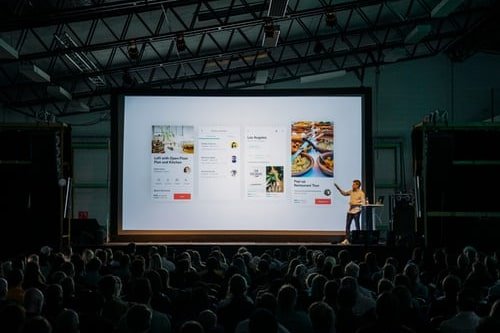A professional website is essential for anyone looking to build a strong online presence in today’s digital age. Graphics are the most important aspect of a professional website. Websites with high-quality graphics will look more professional, trustworthy, and engaging. Poor graphics can cause visitors to leave.
It doesn’t have to be difficult to create professional website graphics. Anyone can create stunning graphics that make your website stand out with the right tools. This article will show you ten simple ways to create professional website graphics.
High-Quality Stock Photos
Stock images are a great way to create professional-looking graphics for your website. Stock images are premade illustrations or photographs that you can buy and put on your website. Many websites offer high-quality stock photos, including Shutterstock and iStock.
Look for stock images that are relevant to the content of your website and have high resolution. Avoid images that are too common or repetitive. Choose images that are original and visually appealing instead.
Make infographics
Infographics can be a great way of communicating complex information visually and in an easy-to-understand format. These can be used to present data, statistics or any other information that could benefit from a visual representation. Although creating infographics may seem daunting at first, there are many online tools that make it easy, like Piktochart and Canva.
Choose a color scheme that complements your website’s design when creating infographics. Keep the design simple and clear. You can use icons and graphics to represent data, and typography to highlight key points.
Create custom icons
The simple but effective way to improve the visual appeal of your website’s site is through icons. Your website can stand out with custom icons and give it a cohesive look. You can create custom icons online with many tools, including Flaticon and Iconfinder.
Keep icons simple and easy to remember when designing them. To create a cohesive look, use a consistent style and color scheme for all icons.
Use Typography to your advantage
Typography is an important element in website design. It can also be used to create beautiful graphics. You can give your website a professional look by choosing the right fonts, and creatively using typography. You can use typography to highlight text and create headlines that grab the attention.
Choose fonts that match the design of your website when using typography. Avoid using too many fonts as it can lead to a messy and unprofessional appearance.
Make custom graphics with Illustrator
Adobe Illustrator is a powerful tool for creating custom graphics for websites. You can easily create high-quality vector graphics that are scaleable to any size, without sacrificing quality. You can use Illustrator to create logos and icons as well as illustrations.
Learn the basics of Illustrator and explore different tools and techniques. You can create custom graphics to match the design of your website.
Use Gradient Backgrounds
Gradient backgrounds are a very popular design trend for websites. They can give your website a modern and professional look. You can use gradients as backgrounds for images, text or any other graphic.
Use gradients in a way that matches your website’s design. Avoid using too many colors, or creating a gradient too intense or bright. This can distract the user.
Add depth and shadows
To give your website graphics a more real-looking and three-dimensional look, shadows and depth can both be used. Shadows can also be used
To create depth and dimension, you can use text, images and other graphics. This will make your website look professional and more engaging.
Use subtle, natural-looking shadows to add depth and shadows. Avoid using unrealistic or harsh shadows as they can make your graphics look dated and unprofessional. To create subtle effects that enhance the overall appearance of your graphics, use shadows sparingly.
Incorporate animation
You can use animation to create interactive and engaging website graphics. Animations can be used on websites to highlight key information or create a feeling of motion and flow.
Keep animation simple and subtle when incorporating it. Avoid too many distracting or flashy animations. This can make your website look cluttered and could cause visitors to leave. To create an engaging and dynamic experience for visitors, use animations sparingly.
Make custom patterns
You can add texture and visual interest by using patterns to enhance your website’s graphics. Online tools and software like Adobe Photoshop or Illustrator can be used to create custom patterns.
Choose a color scheme that matches the design of your website and make a pattern that is simple and repetitive. Avoid using too many patterns or complicated designs as they can make your website look cluttered and distracting.
Use Consistent Design Elements
Consistent design elements are key to professional website graphics. Consistent color schemes, typography, and graphics are all important. You can achieve a professional and cohesive look for your website by using the same design elements.
Keep in mind the overall design of your website’s graphics when designing them. Make sure to match the branding of your website and use consistent design elements to support your website’s content.
Optimize for Web
Optimizing website graphics for the internet is crucial when creating them. To ensure your website loads quickly, you should reduce the size of your graphics.
Large graphics can slow down the website’s loading time. This can frustrate visitors and can negatively impact your website’s search engine ranking. You can reduce the size of your graphics using online compressors or Photoshop.
Use high-quality images
High-quality images are essential to creating professional website graphics. Websites that use low-quality images or blurry images will look amateurish and unprofessional.
Choose high-quality images that relate to your content when choosing images for your website. Stock photos should be high-resolution images that don’t appear fake or staged.
Keep it simple
It’s important to keep your website graphics simple when designing them. Do not overload your graphics with unnecessary information. Complex designs can make it difficult to comprehend.
To create a professional and modern look, use simple design elements like bold typography, negative space, and clean lines. Simplicity can make your website’s graphics easier to use and more user-friendly.
Use Guides and Grids
Grids and guides are a great way to create visually appealing website graphics. Grids and guides are a great way to create balance and harmony in your website graphics.
Grids and guides can be used to ensure your website’s graphics match the overall design of your website. This will make your website appear more professional and polished.
Multiple Devices Tested
It is important to test website graphics on different devices when designing them. While your website graphics might look great on a desktop computer, they may not look the same on a tablet or mobile phone.
To ensure your website graphics look great and are easy to navigate, test them on several devices. This will ensure your website is easily accessible to a larger audience and improve the user experience.
It is important to create professional website graphics if you want to build a strong online presence. These tips will help you create high-quality graphics for the web that are visually appealing and easily accessible to a broad audience.
It doesn’t need to be complicated or overwhelming to create professional website graphics. These ten simple steps will help you create professional website graphics. They will enhance your website’s content and engage your visitors. These techniques will help you create striking graphics that will make your website stand out, whether you are a business owner or a person looking to build a personal website.














